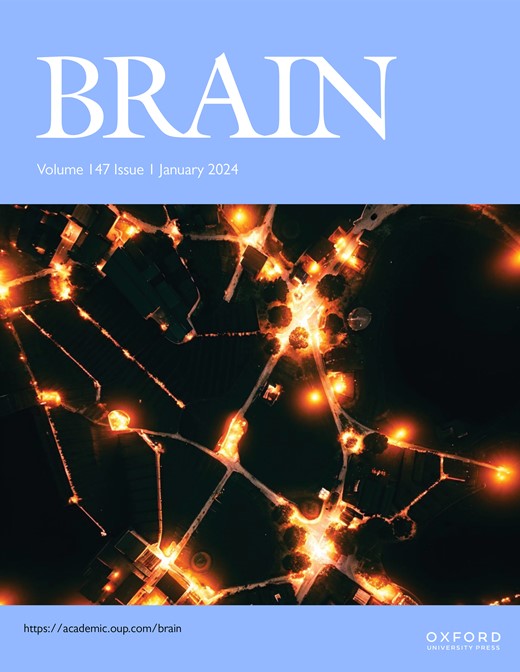Modulating inhibitory synaptic plasticity to restore basal ganglia dynamics in Parkinson’s disease
IF 10.6
1区 医学
Q1 CLINICAL NEUROLOGY
引用次数: 0
Abstract
Parkinson’s disease is characterized, in part, by hypoactivity of direct pathway inhibitory projections from striatum to the globus pallidus internus (GPi) and indirect pathway inhibitory projections from globus pallidus externus (GPe) to the subthalamic nucleus (STN). In people with Parkinson’s disease (n=32), we explored the potential use of intracranial stimulation for eliciting long-term potentiation (LTP) of these underactive pathways to produce improvement of symptoms that persists beyond stimulation cessation. During GPi deep brain stimulation (DBS) surgery, we found strong evidence (p<.05; BF10>10) of increased amplitudes of hand movements and striato-GPi evoked potentials before versus after high-frequency microstimulation. In a small sample of outpatients with sensing-enabled GPi-DBS, we found anecdotal evidence (p<.10; BF10>1) of improved hand movements and attenuated beta frequency oscillations. In STN, enduring behavioural effects, potentiation of GPe-STN projections (intraoperative), and decreases to beta oscillations (extraoperative) were not observed. Our findings support that LTP-like effects in GPi may produce motor improvements that extend beyond stimulation cessation, while the lack of effects in STN suggests the need for optimizing stimulation paradigms for effective LTP induction. These findings nevertheless highlight the potential of LTP-based strategies for sustained therapeutic benefits, which may be useful for mitigating DBS side-effects and optimizing battery usage.求助全文
约1分钟内获得全文
求助全文
来源期刊

Brain
医学-临床神经学
CiteScore
20.30
自引率
4.10%
发文量
458
审稿时长
3-6 weeks
期刊介绍:
Brain, a journal focused on clinical neurology and translational neuroscience, has been publishing landmark papers since 1878. The journal aims to expand its scope by including studies that shed light on disease mechanisms and conducting innovative clinical trials for brain disorders. With a wide range of topics covered, the Editorial Board represents the international readership and diverse coverage of the journal. Accepted articles are promptly posted online, typically within a few weeks of acceptance. As of 2022, Brain holds an impressive impact factor of 14.5, according to the Journal Citation Reports.
 求助内容:
求助内容: 应助结果提醒方式:
应助结果提醒方式:


